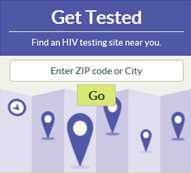Asians
Health disparities are differences in the incidence, prevalence, and mortality of a disease and the related adverse health conditions that exist among specific population groups. These groups may be characterized by gender, age, race or ethnicity, education, income, social class, disability, geographic location, or sexual orientation. These health disparities are one reason why HIV/AIDS, viral hepatitis, STDs, and TB take a greater toll in one population group over another. Find information about how these diseases affect Asian populations.
HIV/AIDS
In 2014, Asians made up 5% of the American population and accounted for 2% of HIV infection diagnoses. Asian American rates of HIV infection are very low compared to other racial/ethnic groups.
More Information:
Sexually Transmitted Diseases (STD)

Gonorrhea
In 2014, the gonorrhea rate among Asians was 19.3 cases per 100,000 population, which was lower than (0.5 times) the rate among whites. This difference is larger for Asian women than for Asian men. In 2014, rates among Asians were again lower than rates among whites in all four regions of the United States.
Chlamydia
In 2014, the chlamydia rate among Asians was 112.0 cases per 100,000 population, an increase from the 2013 rate of 111.5 cases per 100,000. The overall rate among Asians was lower than the rate among whites.
Syphilis
In 2014, the rate of primary and secondary (P&S) syphilis among Asians was 2.8 cases per 100,000 population. The 2014 rate of P&S syphilis for Asians was 0.8 times the rate for whites. This difference is larger for Asian women (0.4 times the rate among white women) than for Asian men (0.9 times the rate among white men).
More Information:
Viral Hepatitis
Acute Hepatitis A
 Although rates of acute hepatitis A among Asian/Pacific Islanders have continued to decline, this group has had the highest rate since 2008. In 2014 the rate of hepatitis A for Asian/Pacific Islanders was 0.73 per 100,000 population in 2014.
Although rates of acute hepatitis A among Asian/Pacific Islanders have continued to decline, this group has had the highest rate since 2008. In 2014 the rate of hepatitis A for Asian/Pacific Islanders was 0.73 per 100,000 population in 2014.
Acute Hepatitis B
In 2014, the rate of acute hepatitis B was lowest for Asian/Pacific Islanders and Hispanics (0.29 cases per 100,000 population for each group.
Chronic Hepatitis B
In 2014, among the 1784 cases for whom race/ethnicity was known, Asian/Pacific Islanders accounted for the highest number of chronic HBV cases (n=1,784, 60%) reported from all 7 funded sites .
Acute Hepatitis C
Rates for acute hepatitis C decreased for all racial/ethnic populations through 2003. During 2002–2011, the incidence rate of acute hepatitis C remained below 0.5 cases per 100,000. The rate increased to 0.6 cases per 100,000 population in 2012 and to 0.7 cases per 100,000 population in 2013 and 2014. In 2014 Asian/Pacific Islanders had the lowest rate for hepatitis C at 0.07 case per 100,000 population.
More Information:
Tuberculosis (TB)
Overall, 9,421 TB cases were reported to CDC from the 50 states and the District of Columbia in 2014. In 2014, Asians accounted for 32% of the total number of reported TB cases in the United States. Asians born outside the United States represented 46% of the TB cases among foreign-born persons in 2014.
More information:
- Page last reviewed: March 14, 2014
- Page last updated: February 1, 2017
- Content source:


 ShareCompartir
ShareCompartir


